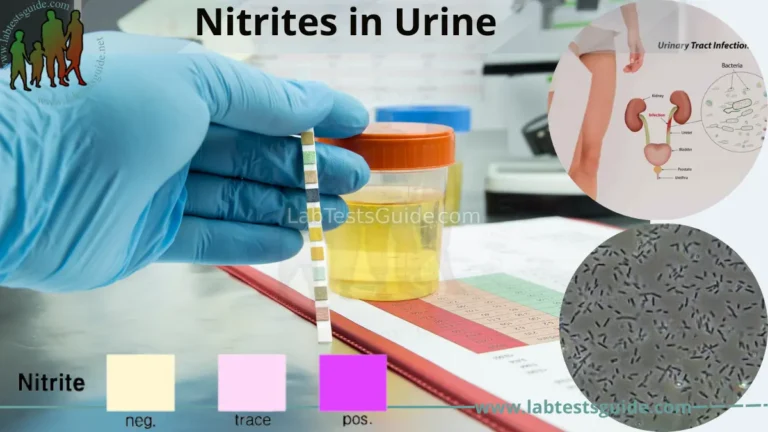MCQs on Biochemical Tests for Identifying Bacteria in Clinical Laboratories:
Biochemical tests identify microorganisms by analyzing their metabolic reactions to specific compounds, aiding phenotypic classification. These traditional methods, still used for rapid detection, rely on observable changes like turbidity (indicating growth) or pH-induced color shifts. They can differentiate microbial groups or species based on physiological traits, offering cost-effective simplicity. However, drawbacks include lengthy processing times (days), labor-intensive procedures, and potential false positives among similar species. While valuable for basic diagnostics, these limitations highlight the balance between accessibility and efficiency in microbial identification.

Key Themes Covered:
- Catalase & Coagulase Tests: Differentiate Staphylococci and Streptococci.
- IMViC Series: Identify Enterobacteriaceae (e.g., E. coli vs. Klebsiella).
- Urease Test: Detect Proteus and Helicobacter pylori.
- TSI Agar: Assess sugar fermentation and H₂S production.
- Nitrate Reduction: Determine anaerobic respiration pathways.
- Hemolysis Patterns: Alpha, beta, and gamma hemolysis on blood agar.
- Specialized Tests: Optochin, bacitracin, CAMP, and bile solubility for Streptococci identification.
- Enzyme Activity: DNase, lipase, lecithinase, and gelatinase tests.
- Fungal Tests: Germ tube test for Candida albicans.
Questions 7651 to 7700
- A positive citrate test is indicated by:
A. Yellow color
B. Blue color change ✅
C. Black precipitate
D. Red ring - The Catalase test is used to detect the presence of which enzyme?
A. Peroxidase
B. Catalase ✅
C. Oxidase
D. Urease - A positive catalase test is indicated by:
A. Green color
B. Red ring
C. Gas bubbles ✅
D. Black precipitate - Which organism is catalase-positive?
A. Streptococcus
B. Staphylococcus ✅
C. Lactobacillus
D. Enterococcus - The Catalase test is performed using:
A. Kovac’s reagent
B. Hydrogen peroxide ✅
C. Barritt’s reagent
D. Methyl red - What does a positive oxidase test indicate?
A. Ability to ferment glucose
B. Presence of cytochrome c oxidase ✅
C. H₂S production
D. Production of indole - Which reagent is used in the Oxidase test?
A. Tetramethyl-p-phenylenediamine ✅
B. Methyl red
C. Crystal violet
D. Kovac’s reagent - A positive oxidase reaction turns the reagent:
A. Yellow
B. Green
C. Purple ✅
D. Black - Which of the following is oxidase-positive?
A. E. coli
B. Pseudomonas aeruginosa ✅
C. Enterobacter
D. Klebsiella - The Urease test is used to detect the enzyme that hydrolyzes:
A. Citrate
B. Urea ✅
C. Starch
D. Casein - A positive urease test is indicated by:
A. Green color
B. Blue color
C. Pink color ✅
D. Black precipitate - Which organism is strongly urease-positive?
A. E. coli
B. Salmonella
C. Proteus mirabilis ✅
D. Shigella - Gelatinase test is used to detect bacterial ability to:
A. Hydrolyze urea
B. Produce acid
C. Hydrolyze gelatin ✅
D. Reduce nitrate - A positive gelatin hydrolysis test shows:
A. Red color
B. Liquid medium at cold temperatures ✅
C. Blackening of media
D. Turbidity - Which of the following organisms is gelatinase-positive?
A. E. coli
B. Bacillus subtilis ✅
C. Klebsiella
D. Enterobacter - Which enzyme breaks down starch in the starch hydrolysis test?
A. Amylase ✅
B. Protease
C. Catalase
D. Urease - What reagent is used to detect starch hydrolysis?
A. Methyl red
B. Iodine solution ✅
C. Hydrogen peroxide
D. Phenol red - A clear zone around bacterial growth in starch agar indicates:
A. No starch present
B. Starch hydrolysis ✅
C. Acid production
D. Protein degradation - Lipase test checks the ability to break down:
A. Proteins
B. Nucleic acids
C. Lipids ✅
D. Carbohydrates - Positive lipase activity on Spirit Blue agar appears as:
A. Red zone
B. Blue precipitate
C. Clear zone around colonies ✅
D. Green sheen - The DNase test is used to detect:
A. Urea breakdown
B. DNA hydrolysis ✅
C. H₂S production
D. Nitrate reduction - DNase-positive organisms show:
A. Cloudy medium
B. Pink colonies
C. Clear zone around growth after adding HCl ✅
D. Gas bubbles - Which of the following is DNase-positive?
A. E. coli
B. Staphylococcus aureus ✅
C. Enterococcus
D. Bacillus cereus - Which enzyme test is used to differentiate Staphylococcus from Streptococcus?
A. Oxidase
B. Urease
C. Catalase ✅
D. Indole - Enzyme tests are important in bacterial identification because they:
A. Are always faster than molecular methods
B. Require less expertise|
C. Reflect metabolic properties of bacteria ✅
D. Work on all viruses - Which test is most suitable to detect cytochrome system activity?
A. Catalase
B. Citrate
C. Oxidase ✅
D. Indole
- The Triple Sugar Iron (TSI) test differentiates bacteria based on:
A. Nitrate reduction
B. Sulfur reduction, sugar fermentation, and gas production ✅
C. Protein hydrolysis
D. DNA breakdown - A yellow butt and slant in a TSI tube indicates:
A. No sugar fermentation
B. Glucose fermentation only
C. Lactose and/or sucrose fermentation ✅
D. H₂S production - H₂S production in a TSI tube appears as:
A. Red slant
B. Pink colonies
C. Black precipitate ✅
D. Blue color - Which component of the TSI medium detects hydrogen sulfide production?
A. Phenol red
B. Sodium thiosulfate and iron salts ✅
C. Urea
D. Methyl red - Gas production in TSI is visible by:
A. Yellow color
B. Cracks or bubbles in the agar ✅
C. Red ring
D. Black line - Lysine Iron Agar (LIA) is used to test for:
A. Citrate utilization
B. Tryptophanase activity
C. Lysine decarboxylation and H₂S production ✅
D. Lactose fermentation - A positive lysine decarboxylation in LIA turns the butt:
A. Red
B. Yellow
C. Purple ✅
D. Black - Which color indicates a positive phenylalanine deaminase test?
A. Red
B. Blue
C. Green ✅
D. Yellow - Which reagent is added to the phenylalanine deaminase test?
A. Methyl red
B. Ferric chloride ✅
C. Kovac’s reagent
D. Barritt’s A and B - Positive phenylalanine deaminase is shown by which genus?
A. Escherichia
B. Proteus ✅
C. Shigella
D. Salmonella - Which test is used to detect nitrate reduction?
A. Oxidase
B. Citrate
C. Nitrate test ✅
D. Catalase - Nitrate reduction is confirmed by the production of:
A. Ammonia
B. Nitrite or nitrogen gas ✅
C. Acetoin
D. Indole - If no color develops in nitrate test after adding reagents, and zinc turns it red, the result is:
A. Positive
B. Negative ✅
C. Inconclusive
D. Invalid - Ornithine and lysine decarboxylase tests detect:
A. Protein degradation
B. Urea breakdown
C. Amino acid decarboxylation ✅
D. Fermentation - A positive decarboxylase test changes the color to:
A. Green
B. Red
C. Purple ✅
D. Yellow - Which indicator is used in decarboxylase tests?
A. Phenol red
B. Bromocresol purple ✅
C. Methyl red
D. Ferric chloride - A negative decarboxylase test appears:
A. Yellow ✅
B. Blue
C. Red
D. Green - Mannitol Salt Agar (MSA) is selective for:
A. Gram-negative rods
B. Enterobacteriaceae
C. Staphylococcus species ✅
D. Lactobacillus - Fermentation of mannitol on MSA changes the color to:
A. Red
B. Blue
C. Yellow ✅
D. Black - Which enzyme breaks down casein in milk agar?
A. Gelatinase
B. Caseinase ✅
C. Amylase
D. Urease - Positive casein hydrolysis is observed by:
A. Black precipitate
B. Pink ring
C. Clear zone around colonies ✅
D. Yellow halo - CAMP test is used to identify:
A. Streptococcus agalactiae ✅
B. Enterococcus faecalis
C. Neisseria gonorrhoeae
D. Bacillus subtilis - The CAMP factor enhances hemolysis with:
A. Alpha-hemolysin
B. Beta-lysin of Staphylococcus aureus ✅
C. Catalase
D. DNase - Which biochemical test identifies group D Streptococcus and Enterococci?
A. Bile esculin test ✅
B. Methyl red test
C. Starch hydrolysis
D. Indole test
Possible References Used






